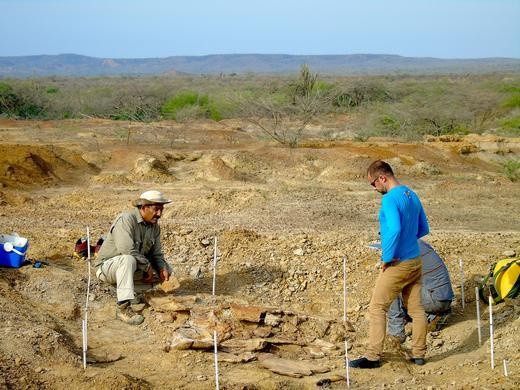Prehistoric Car-sized Turtle Fossils Unearthed in South America

Scientists have found new fossils of a prehistoric, car-sized turtle in the Tatacoa Desert in Colombia, and in the Urumaco region in Venezuela.
The Stupendemys geographicus lived around the lakes and rivers of what is now northern South America around 13 million years ago.

Little was known about the prehistoric creature when they were first discovered in the 1970s. "For almost four decades, we didn't have new and excellently preserved fossils of this turtle," Edwin Cadena, one of the study's lead researchers, said.
The discovery of this new fossil could provide a deeper, more comprehensive understanding of the creature. Science Advances published a new research article last Wednesday. It details new and important findings of the Stupendemys.
In the Life of Stupendemys geographicus
The Stupendemys lived across northern South America before the Amazon and Orinoco rivers were formed. This prehistoric creature is said to have spent a lot of its time sitting at the bottom of freshwater streams and small lakes. It lived in a wetland and lake system where there was likely plenty of room for massive animals.
These reptiles were over 13ft long and 1.25 tons in weight. The now-extinct freshwater turtle would have been about the size and weight of a mid-sized car. It is twice the size of the marine leatherback, which is considered the largest living turtle.
The Stupendemys male was found to have forward-pointing horns on either side of its shell. The horns may have served as weapons for fighting. This was concluded after scientists found deep scars in the fossil.
The creature's female counterparts did not have horns.
Cadena and his team also found bite marks and punctured bones, evidence of fights between the giant turtles and giant caimans, which occupied the northern Neotropics at the same time and place as the Stupendemys.
The researchers also found a 3-meter long shell and the first lower jaw, which gave a clue to its diet. "Its diet was diverse, including small animals - fishes, caimans, snakes - as well as mollusks and vegetation, particularly fruits and seeds," Cadena said.
The reptile's size may have been crucial in its defense against other predators. It lived in the same place as the giant crocodilians, the caiman Purussaurus, and the gavial relative Gryposuchus.
The Stupendemys geographicus went extinct around 5 million years ago.
The caiman Purussaurus mirandai
This creature lived in the swamps of what is now Venezuela. It grew up to 32ft in length.
The Purussaurus mirandai is the only crocodylian to have an extra vertebra in its sacrum. Scientists say the extra vertebra allowed it to move on land. It also helped the creature move its massive weight.
"We didn't think that Purussaurus moved quickly on land. Our findings are important because they help show how development can be altered in order to enable biomechanical changes as animals evolve into larger body sizes," Royal Veterinary College Professor John Hutchinson said.
The caiman is said to have lived seven to five million years ago in the wetland ecosystems of Northern South America. It was considered the largest predator.
Subscribe to Latin Post!
Sign up for our free newsletter for the Latest coverage!
© 2025 Latin Post. All rights reserved. Do not reproduce without permission.














